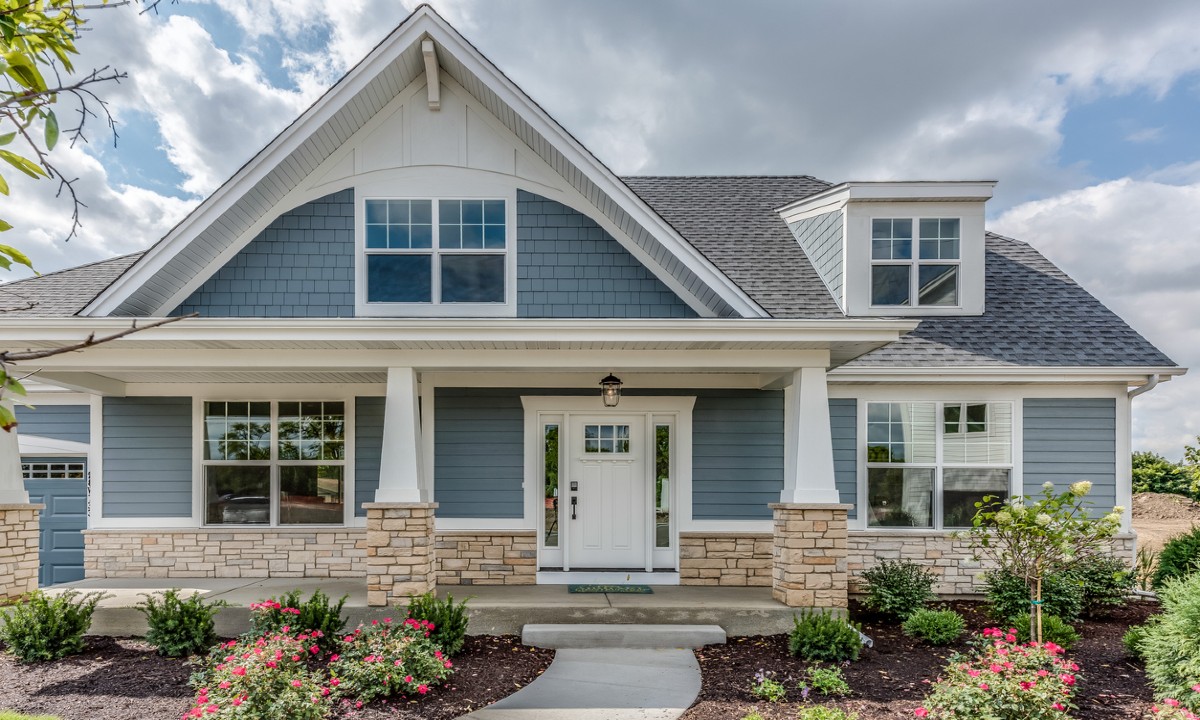Tips To Age-Proof Your Home

According to 2021 statistics, adults between the ages of 65 and 74 years have the highest homeownership rate in the US at 79.5 percent. Close to 90 percent of adults over 65 years would like to remain in their current home as long as possible, and 80 percent believe they won’t be moving again. We chatted with Rob Krohn, Vice President of Marketing for Epcon Franchising and Epcon Communities, to find out the best ways to start age-proofing your home when retirement approaches.
As a specialist in the home market for active over 55 buyers, Krohn knows exactly which home features should get the most attention. Doing some renovations before or at retirement will help make your home safe and accessible for your life ahead.
While Krohn emphasizes the importance of open floor plans that offer ease of accessibility, he also recommends the following home features:
WALK-IN SHOWER
Regardless of your age, walk-in showers are highly trendy and add a luxuriously modern look to any bathroom. Older adults will have much easier access using this than getting in and out of a bathtub. Depending on the space available, you may also want to include bamboo or tiled shower seating and a handrail.
FIRST-FLOOR MASTER SUITE
If you live in a multi-story house, you’ll want to move the master bedroom and bathroom downstairs. Even if you’re not ready to do that yet, make sure the layout is ready with a fully equipped bedroom and bathroom to make the change effortlessly when it’s time. Being able to access everything without having to deal with stairs will make everyday tasks much easier.
NON-SLIP AND NON-TRIP FLOORS
Check all entryways and doors to ensure there isn’t a lip that poses a trip hazard. Whether you don’t see the lip, don’t lift your feet high enough, or accidentally have your shoe catch on the edge, these seemingly insignificant raised areas pose a major fall hazard. They also hinder movement with a walker or wheelchair.
When it comes to flooring, an even, non-slip floor is the best and safest option. Carpeting is preferred over using rugs since rugs also pose a slip-and-trip hazard. Choose textured tiles for floor areas that need to be tiled. If you live in a cold climate it may be worth investing in underfloor heating.
HOME EXTERIOR
The exterior of your home requires the same attention to eliminate any trip hazards. You want to make walkways as smooth and obstruction-free as possible. Replace uneven or broken pathways and crumbling concrete or loose bricks.
Ensure that walkways and entrances are well lit and consider installing motion sensor lighting outdoors. If you enjoy gardening, start adding raised beds so you can continue your hobby without back and joint strain for many more years.
LIGHTING AND PERSONAL SECURITY
Adequate interior lighting is essential. Switch to brighter bulbs or add lighting to areas that are not well-lit, especially if there are stairs in the house. Install dimmers if needed so you have the option of creating ambiance lighting but can also ensure that areas are well-lit to avoid accidents.
An emergency call system is another safety feature that can give you the security that assistance is always on hand when needed. This can be done in various ways, depending on the setting of the home.
You can get a personal alarm in the form of a remote which you carry on you. Alternatively, emergency call buzzers can be installed in key areas of the home. When emergency buttons or buzzers are activated, the identified service or even family members can be notified immediately that you have called for help.
FURNITURE HEIGHT AND EASE OF ACCESS
If your bed and couches are relatively low, consider raising them to make it easier to get on and off. There are many ways to do this. Bed wedges, mattress foundations, adjustable bed frames, bed risers, and mattress toppers are all easy options that don’t require purchasing new furniture.
While some adjustments in the home are much easier to make than others, making sure you are comfortable and safe will allow you to live in a home you love for many more years.

